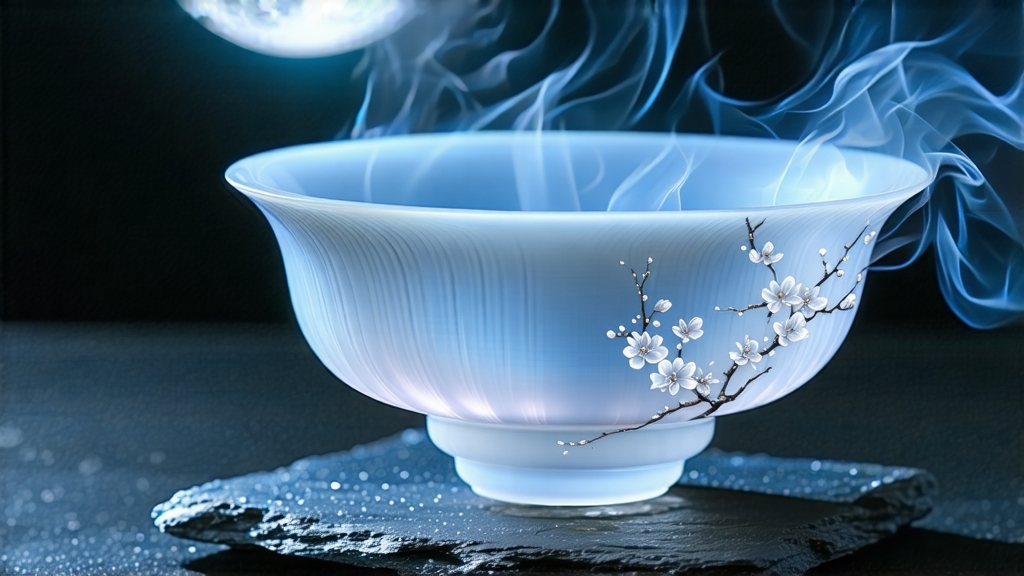
Among the six great families of Chinese tea, white tea is the least theatrical yet the most elusive; it does not dazzle with jade-green brightness like Longjing, nor does it thunder with charcoal fire like Wuyi rock oolong. Instead it whispers, and within that whisper Bai Hao Yin Zhen—Silver Needle—stands as the softest, most luminous syllable. International drinkers often meet white tea through bagged “bai mu dan” blends, but to understand the genre’s soul one must confront the upright, moon-touched needles that have been prized since the Song imperial court first catalogued “white down” tribute in 1115 CE.
History: From Song Tribute to Ming Monks
Song dynasty tea cakes were stamped with dragon motifs and whisked in ceramic bowls, yet already the chronicles note that “buds covered in hoarfrost” were separately collected in northern Fujian. When the Hongwu Emperor abolished compressed tea in 1391, loose-leaf culture flourished; monks at the Taimu mountains began sun-drying extra buds reserved for malarial soldiers, discovering that minimal handling preserved not only the leaf but a lucid, hay-sweet liquor. By the late Qing, Silver Needle had become the currency of scholars: one tael of needles equaled one tael of silver in Fuzhou teahouses. Early European ports received it as “Pekoe Souchong,” a misnomer that nonetheless carried the fragrance of osmanthus across the North Sea.
Terroir: Why the Taimu Massif Creates Down
Authentic Bai Hao Yin Zhen is born between 27° N and 27.5° N latitude, where granitic soils drain quickly yet hold just enough moisture for the da bai (big white) cultivar. At 600–800 m elevation, morning fog refracts light, encouraging long, starchy buds; ultraviolet intensity at noon thickens the pubescence that will later shimmer like frost. Because the region sits inside a submerged crater rim, night temperatures plummet, locking in amino acids that translate into custard-like sweetness. Attempts to replant da bai in Yunnan or Guizhou yield longer, greener shoots, but the liquor lacks the “tender coconut” note that Fujian artisans call qing gan.
Harvest Calendar: One Week, One Dawn
Plucking begins when the last field cricket falls silent, usually between 15 March and 20 April. Only the unopened needle—exactly 2.5 to 3 cm, still sheathed in two miniature leaves—is accepted. Experienced pickers work from 5:20 a.m. to 9:00 a.m., before the sun climbs thirty degrees, because brighter light oxidizes polyphenols and reddens the tip. A full day’s haul for one woman weighs barely 500 g fresh; 30,000 buds shrink to 100 g after drying. The poetic rule is “no needle touches earth”: buds drop directly into bamboo trays lined with hemp cloth, preventing bruising that would blacken during withering.
Craft: The Art of Doing Almost Nothing
White tea’s minimalism is deceptive; the processor must orchestrate invisible variables over 48–72 hours. The fresh pile is first spread 2 cm thick under shade netting for six hours, allowing surface moisture to evaporate—this “green withering” reduces grassy volatiles. Trays are then moved into a sun court tiled with black basalt that stores radiant heat; here ambient temperature hovers at 26 °C, relative humidity 65 %. Every twenty minutes the tea master flips the buds, judging by touch: too cool and the enzyme reaction stalls, too hot and the bud blushes like a green apple left in a car.
When the bud bends without snapping—moisture now ~40 %—the trays rest overnight in a pine-ventilated loft. This “moon withering” is unique to Yin Zhen; cool air re-distributes water from stem to tip, homogenizing cell sap so that the final liquor shows no hollow top note. At dawn the processor tests a sample: press a needle between forefinger and thumb, then release; if it springs back like fresh chive, another solar cycle is needed. When the moisture reaches 8–10 %, the tea is considered finished; no rolling, no pan-fire, just a slow exhale.
Grades & Commercial Faces
Although China’s national standard lists only three white teas—Yin Zhen, Bai Mu Dan, and Shou Mei—connoisse